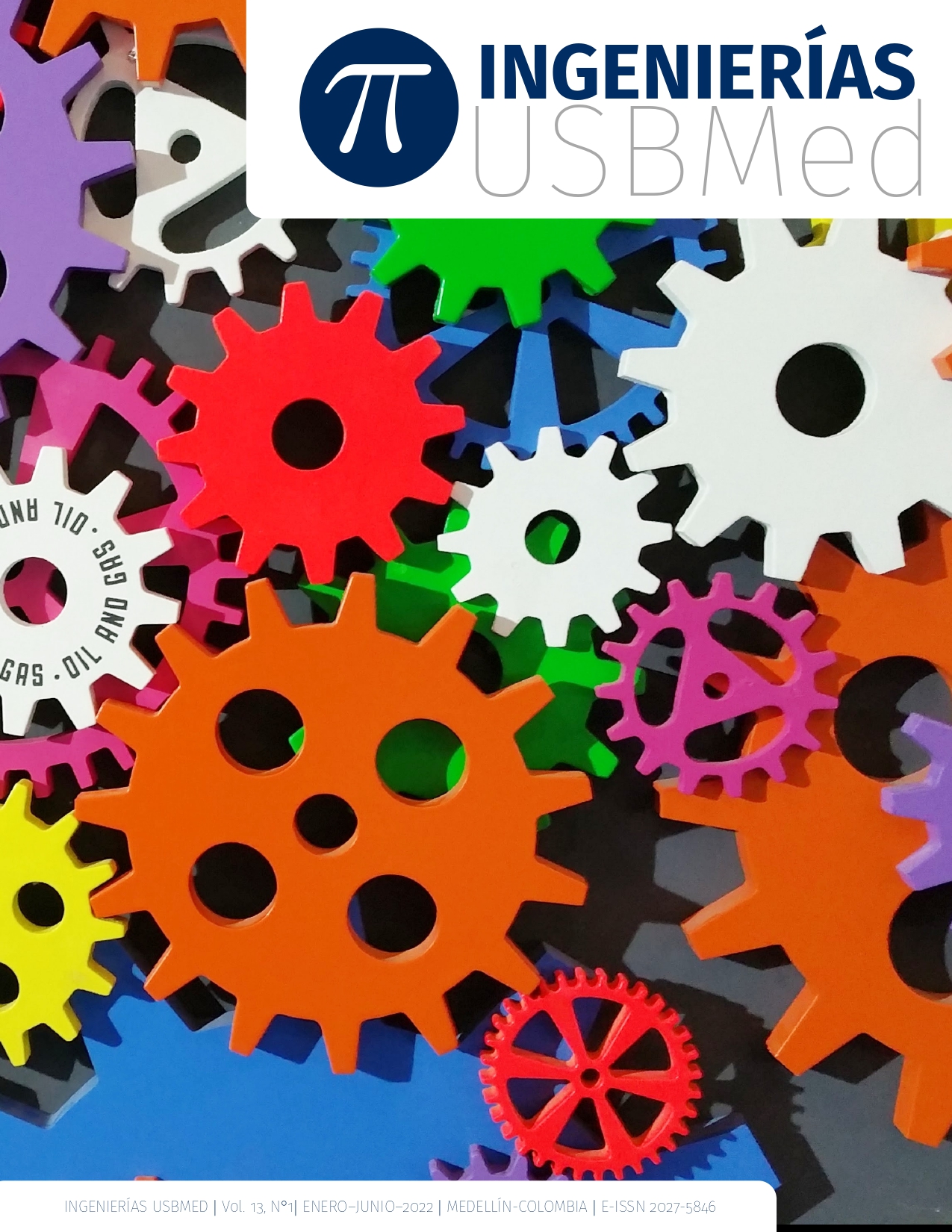This journal provides immediately free access to its contents under the principle that make available the research results for free to the public, helps for a greater global exchange of knowledge.
Therefore, the journal invokes the Creative Commons 4.0
License attributions: Recognition – Non-commertial - Share equal. Commercial use and distribution of original or derivative works are not permitted and must be done with a equal license as the one that regulate the original work.
Abstract
The implementation of efficient wastewater treatment systems is becoming more essential every day to avoid environmental deterioration, imbalance of biogeochemical processes, public health problems, variation in the physicochemical and microbiological characteristics of water, among others. For this, there are various treatment methods that may involve biological and physicochemical components. Carrying out a characterization of the wastewater is important, not only to know it, but also to select the most appropriate treatment train and thus guarantee adequate removal of the contaminants present in said water. The monitoring of a domestic wastewater treatment system was carried out, coming from a restaurant in which only previously prepared food is served in other facilities and works once a day during the period between 12:00 and 2: 00 pm. It was found that these waters have high contents of detergents, fats and oils, and a small amount of biodegradable organic matter, therefore, both physicochemical and biological treatability tests were carried out, in order to determine the most efficient way of treating these waters waste and be able to comply with resolution 0631 of 2015, which is the current regulations in Colombia for wastewater.
Keywords:
References
[2] C.A. Bundy, D. Wu, M.C. Jong, S. Edwards, S. Ahammad, D. Graham, “Enhanced denitrification in downflow hanging sponge reactors for decentralized domestic wastewater treatment,” Biores Technol, vol. 226, pp. 1–8, 2017
[3] R. Rojas, “Sistemas de Tratamiento de Aguas Residuales. Gestión Integral de Tratamiento de Aguas Residuales,” CEPIS/OPS-OMS, pp. 1-19, 2002
[4] N.M. Cediel, “Herramientas para la toma de decisiones en salud pública basada en la evidencia y priorización de enfermedades,” Rev. Salud pública, vol. 15, no. 5, pp. 694-706, 2013
[5] J. Mills, K. Gage, A. Khan, “Potential influence of climate change on vector-borne and zoonotic diseases: A review and proposed research plan,” Environmental Health Perspectives, vol. 118, no. 11, pp. 1507-14, 2010
[6] CEPIS, “Guía Para el Diseño de Tanques Sépticos, Tanques Imhof y Lagunas de Estabilización,” Lima, pp. 1-35, 2005
[7] M. Molinos, T. Gómez, M. Garrido, R. Caballero, R. Sala, “Assessing the sustainability of small wastewater treatment systems: a composite indicator approach,” Sci Total Environ, vol. 497-498, pp. 607–617, 2014
[8] I.N. Shaikh, M. Ahammed, M.P. Sukanya, “Graywater treatment and reuse Sustainable Water and Wastewater Processing,” Elsevier, pp. 19-54, 2019
[9] G. Crini, E. Lichtfouse, “Advantages and disadvantages of techniques used for wastewater treatment,” Environmental Chemistry Letters, vol. 17, pp. 145–155, 2019
[10] S. Ahuja, “Advances in Water Purification Techniques,” Elsevier, 1st Edition, pp. 440, 2019
[11] M.A. Barakat, “New trends in removing heavy metals from industrial wastewater,” Arab J Chem, vol. 4, pp. 361–377, 2011
[12] S. Moran, “An Applied Guide to Water and Effluent Treatment Plant Design,” Elsevier, pp. 466, 2018
[13] R.C. Bruno, “Bench scale continuous coagulation-flocculation of saline industrial wastewater contaminated by hydrocarbons,” Journal of Water Process Engineering, vol. 34, pp. 101156, 2020
[14] V.M. Yactayo, “Filtración. En CEPIS, Tratamiento de agua para consumo humano: plantas de filtración rápida,” Manual I: Teoría. Tomo I. Lima, 2004.
[15] CEPIS, “Tratamiento de agua para consumo humano: Plantas de filtración rápida. Manual I: Teoría,” Tomo I. Lima, pp. 1-22, 2004
[16] X. Liu, B. Jiang, X. Yin, H.Y. Ma, B.S. Hsiao, “Highly permeable nanofibrous composite microfiltration membranes for removal of nanoparticles and heavy metal ions,” Sep Pur Technol, vol. 233, pp. 115976, 2020
[17] EPA, “Folletos Informativos de Tecnología de Aguas Residuales de la EPA : Filtros intermitentes de arena,” Parte 1. Washington D.C, Estados Unidos, pp. 1-9, 2006
[18] Alcaldía de San Carlos, “Información general de San Carlos,” 2020. Consultado el 8 de abril de 2020. http://www.sancarlos-antioquia.gov.co/MiMunicipio/Paginas/Presentacion.aspx
[19] APHA, AWWA, WPCF, “Standard Methods for the Examination of Water and Wastewater,” 23th ed. Washington, DC, 2017
[20] P, Lara, D.C. Rodríguez, G. Peñuela, “Application of coagulation by sweep for removal of metals in natural water used in dairy cattle,” Afinidad LXXIV, vol. 576, pp. 299-304, 2016
[21] E. Ellouze, N. Tahri, R. Amar, “Enhancement of textile wastewater treatment process using Na- nofiltration,” Desalination, vol. 286, pp. 16–23, 2012














